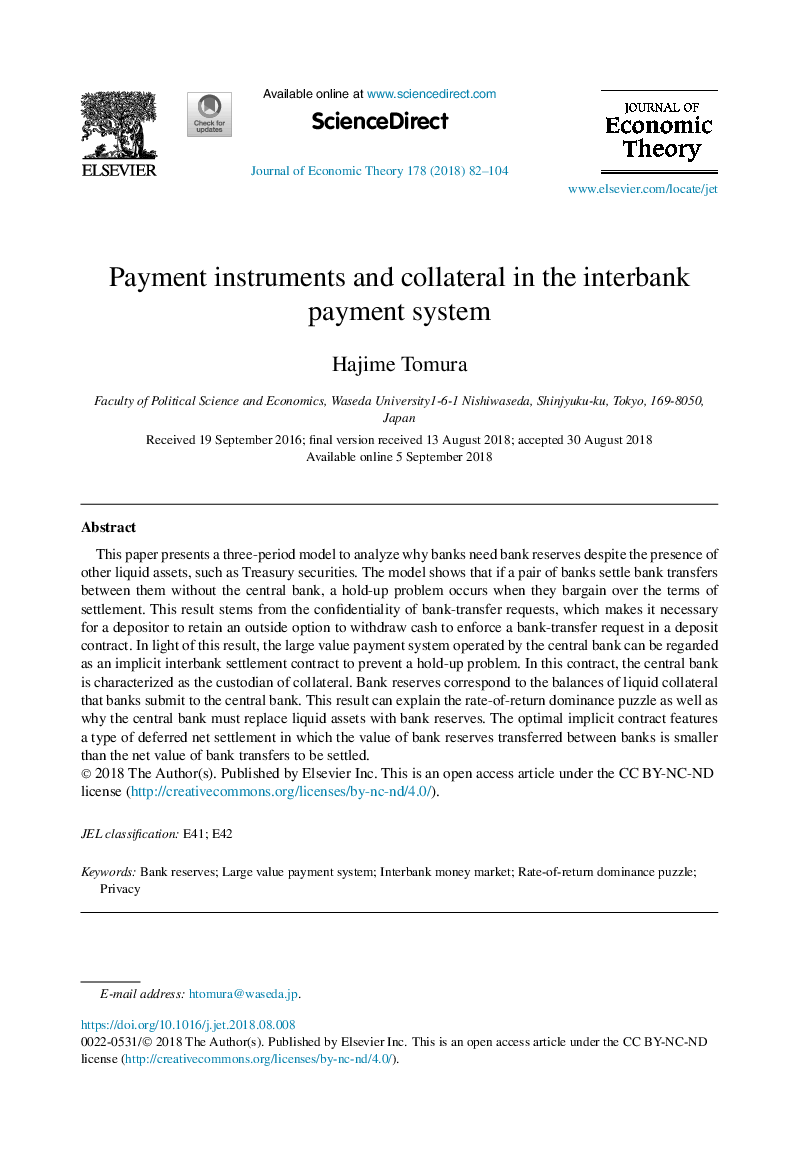| Article ID | Journal | Published Year | Pages | File Type |
|---|---|---|---|---|
| 10134560 | Journal of Economic Theory | 2018 | 23 Pages |
Abstract
This paper presents a three-period model to analyze why banks need bank reserves despite the presence of other liquid assets, such as Treasury securities. The model shows that if a pair of banks settle bank transfers between them without the central bank, a hold-up problem occurs when they bargain over the terms of settlement. This result stems from the confidentiality of bank-transfer requests, which makes it necessary for a depositor to retain an outside option to withdraw cash to enforce a bank-transfer request in a deposit contract. In light of this result, the large value payment system operated by the central bank can be regarded as an implicit interbank settlement contract to prevent a hold-up problem. In this contract, the central bank is characterized as the custodian of collateral. Bank reserves correspond to the balances of liquid collateral that banks submit to the central bank. This result can explain the rate-of-return dominance puzzle as well as why the central bank must replace liquid assets with bank reserves. The optimal implicit contract features a type of deferred net settlement in which the value of bank reserves transferred between banks is smaller than the net value of bank transfers to be settled.
Keywords
Related Topics
Social Sciences and Humanities
Economics, Econometrics and Finance
Economics and Econometrics
Authors
Hajime Tomura,
